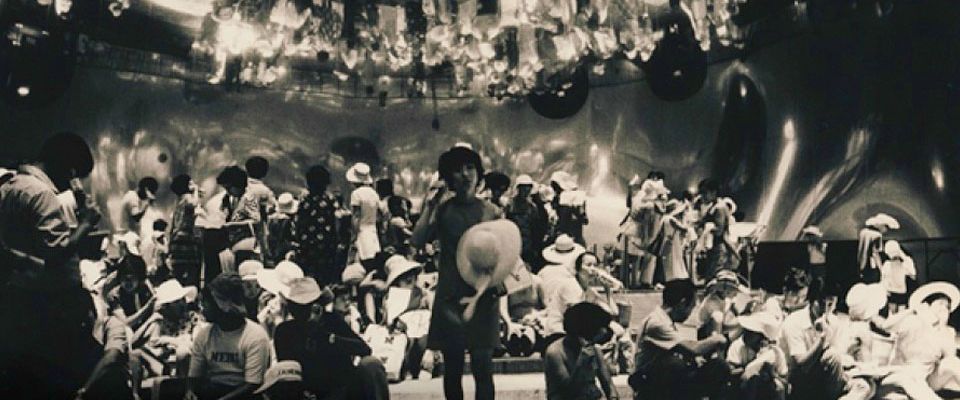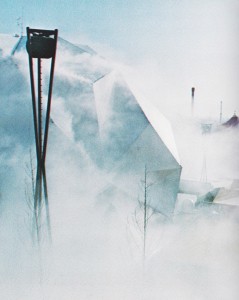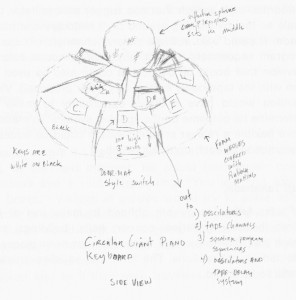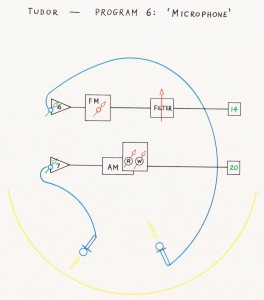Interspatial Symposium
/*
By W
2013-10-01
*/
The Exploratorium in San Francisco opened on October 11th in 1969 with the renowned art and technology show Cybernetic Serendipity curated by Jasia Reichardt. Because of the display of a current work at the Exploratorium by E.A.T. member Fujiko Nakaja a symposium on collaboration in the arts was held. INTERSPATIAL: E.A.T., Cybernetic Serendipity, and the Future of Creative Collaboration was an all day event with presentations by members of E.A.T., the Software Studio and independent researchers and artists.
The morning session of the symposium focussed on the historical analysis of the Pepsi Pavilion, a building created by E.A.T. and collaborating artists for the Expo in Osaka in 1970. Julie Martin, one of E.A.T.’s leading characters, gave a wonderful presentation from an inside perspective on how the ideas for the pavilion and the collaboration of artists and engineers emerged. Physicist Elsa Garmire, who developed the mirror dome for the pavilion talked about the actual impact which E.A.T. had on her as an engineer and scientist.
I talked about the works which were supposed to happen inside the Pepsi Pavilion but never left the conceptual stage because Pepsi terminated the contract with E.A.T. shortly after opening the building. Members of E.A.T. always referred to the building and its interior systems as hardware and the performances or “Live Programming” as software. After analyzing proposals by Terry Riley, Pauline Oliveros/Lynn Lonidier, John Forkner and Takehisa Kosugi I tried to outline the idea of a technical environment as framework for collaboration.
The New York based composer and researcher You Nakai gave a detailed presentation about Pepscillator, a piece by David Tudor realized for the pavilion. Tudor didn’t just see the pavilion as a framework, he used it as an instrument in itself by creating a “no-input” feedback piece. We then joined the stage together to give a short introduction about our attempt of realizing Tudors piece Microphone and discussed the idea of diagrams as musical scores. The morning ended with a panel discussion with Elsa Garmire, Julie Martin, You Nakai and me as a moderator.
Japanese Artist, researcher and educator Kenjiro Okazaki presented an extensive analysis about the difference between circuits and environments in the afternoon session. By referring to the architectural ideas of one of the main architects working for Expo, Kenzō Tange, and comparing them to the ideas of E.A.T. for the pavilion he tried to differentiate between the circuit as a closed technical system and an environment as a more holistic approach to everything and everyone who is part of it.
After a short presentation by Dominic Willsdon about the Mercosul Biennial, in which several pieces from the Art and Technology show at Lacma in the 1970s were exhibited and recreated, John Weber moderated a panel about the future of artistic collaboration. On the panel were Amy Franceschini, Guna Nadarajan and Casey Reas. Every panelist showed examples of their own collaborations and an interesting discussion about Utopia, art as social process and frameworks for collaboration emerged.
The day ended with the screening of Euclidian Illusions by Stan Vanderbeek and performances by Beau Sievers/Meara O’Reilly as well as Holly Herndon/Mat Dryhurst in collaboration with philosopher Reza Negarestani.



